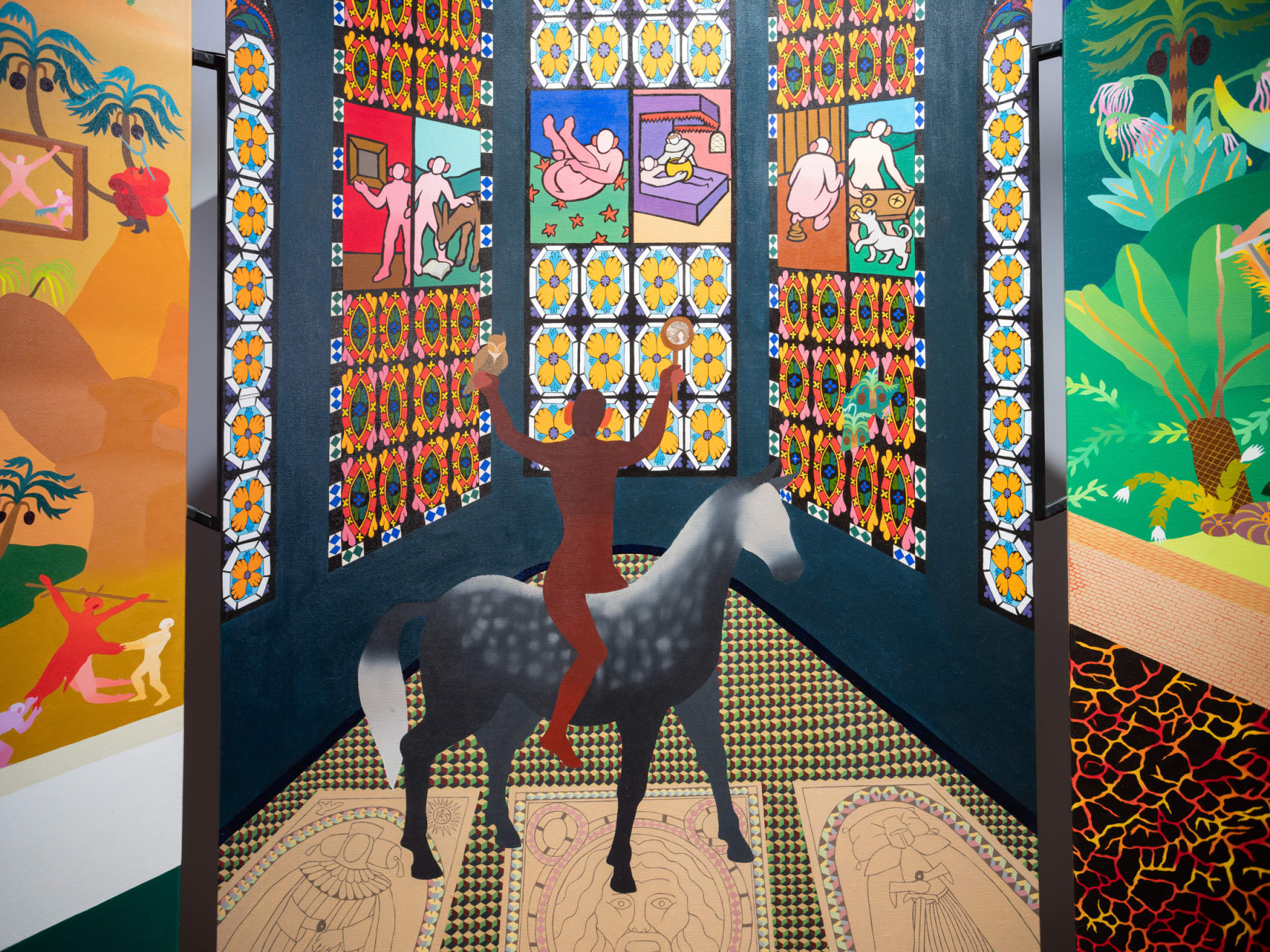Open a larger version of the following image in a popup:
 Photo by Laurynas Skeisgiela
Photo by Laurynas Skeisgiela
 Photo by Laurynas Skeisgiela
Photo by Laurynas Skeisgiela
Open a larger version of the following image in a popup:
 Photo by Laurynas Skeisgiela
Photo by Laurynas Skeisgiela
 Photo by Laurynas Skeisgiela
Photo by Laurynas Skeisgiela
Open a larger version of the following image in a popup:
 Photo by Laurynas Skeisgiela
Photo by Laurynas Skeisgiela
 Photo by Laurynas Skeisgiela
Photo by Laurynas Skeisgiela
Open a larger version of the following image in a popup:
 Photo by Laurynas Skeisgiela
Photo by Laurynas Skeisgiela
 Photo by Laurynas Skeisgiela
Photo by Laurynas Skeisgiela
Monika Radžiūnaitė Lithuanian, b. 1992
Oi, pažiūrėk koksai išminčius atsirado / Oh vide quid sapiens visus est / O išmintingas žmogau // Oh, just look at him, a wise arse / Oh vide quid sapiens visus est / Oh, wise man, 2023
Aliejus, sidabro lakštas, drobė / Oil on canvas, silver leaf
180 x 100 cm
€ 3,700.00
Further images
Monika Radžiūnaitė (b. 1992, Lithuania) is a painter who obtained MA degree at the Vilnius Academy of Arts in 2021, Painting Department. Her work is characterised by interpreting history, reviving...
Monika Radžiūnaitė (b. 1992, Lithuania) is a painter who obtained MA degree at the Vilnius Academy of Arts in 2021, Painting Department. Her work is characterised by interpreting history, reviving elements of medieval and early renaissance paintings, and using cultural references in painting plots.
In her paintings, Radžiūnaitė talks about foolishness and the change in cultural meanings over the course of history. Her works are based on ignorance, foolishness, and/or error. This creative strategy as a conscious state of foolishness frees the artist from the need to know the true or historical meanings of the images or the circumstances of their formation. Radžiūnaitė raises questions about the possibility of reconstructing the Middle Ages and the limitations of such possibility determined by historical circumstances. Past, present, and future are difficult to measure and understand objectively, while cultural continuity and the influence of past epochs on contemporaneity can be deconstructed ironically.
In her paintings, Radžiūnaitė talks about foolishness and the change in cultural meanings over the course of history. Her works are based on ignorance, foolishness, and/or error. This creative strategy as a conscious state of foolishness frees the artist from the need to know the true or historical meanings of the images or the circumstances of their formation. Radžiūnaitė raises questions about the possibility of reconstructing the Middle Ages and the limitations of such possibility determined by historical circumstances. Past, present, and future are difficult to measure and understand objectively, while cultural continuity and the influence of past epochs on contemporaneity can be deconstructed ironically.








